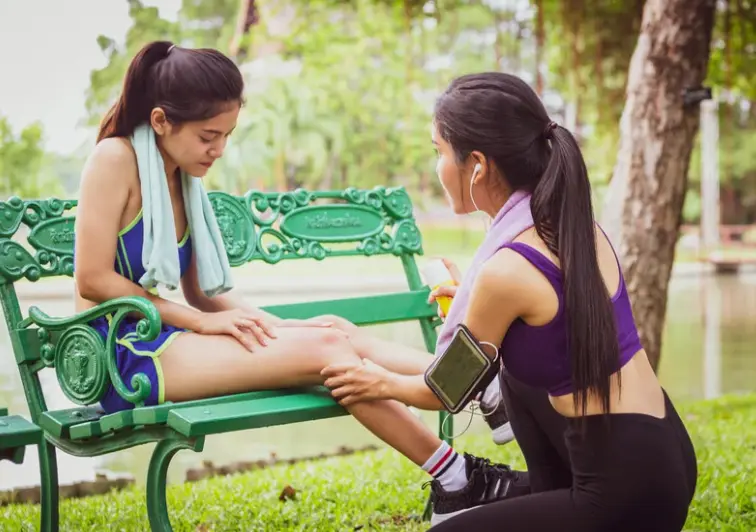
Gyms market themselves as places to build strength and improve health, but injuries are far more common than most people realize. A large cross-sectional study in Saudi Arabia found that gym-related injuries often affect the shoulders (25.2%), knees (20.2%), and lower back (17.7%), with muscle strains and tears making up over a third of reported cases. Another case-control study showed that men under 41 who trained frequently and worked full-time were significantly more likely to get hurt, suggesting that intensity, environment, and outside demands all play a role.
Accidents can occur for various reasons, such as a machine that has not been properly maintained, a slippery floor without warning signs, or inadequate supervision from staff. While some injuries stem from overuse or pushing too hard, others are tied directly to negligence.
And in those situations, you may have the right to pursue compensation. Knowing how liability works can help you protect your health, your finances, and your future if a workout takes a painful turn.
Your health comes first. See a doctor right away, even if the injury seems minor at the moment. Some conditions worsen over time, and medical records create documentation that backs up your claim later.
While you’re still at the gym, gather evidence. Take photos of whatever caused your injury, such as cracked flooring, exposed wires on a machine, or anything else that looks dangerous. Capture images of your visible injuries too.
If there were witnesses, ask for their contact information.
Report what happened to gym management before you leave. Request that they file an incident report and ask for a copy. This paperwork serves as official proof that the gym was aware of your injury and the circumstances surrounding it.
Most gyms require you to sign a waiver before you can start working out. These forms typically state that you accept certain risks that come with exercise, like muscle strains or soreness from pushing yourself too hard.
But waivers have limits.
They don’t give gyms a free pass when they fail to maintain their facilities or equipment properly. If a treadmill belt snaps because the gym ignored repeated repair requests, that’s not an “inherent risk” of running. That’s plain carelessness.
Courts review the specific language in these waivers and how the injury occurred. If the gym’s actions (or lack of action) caused harm, the waiver might not hold up as a defense.
Gyms have a responsibility to keep their spaces safe for members. When they fall short, members can suffer serious harm. Here are common scenarios where legal action might be justified:
The gym itself isn’t always the only defendant in an injury lawsuit. Sometimes other entities share responsibility.
Equipment manufacturers face product liability claims when their machines have design flaws or manufacturing defects. If a weight bench collapses because of a structural weakness, the company that made it could be sued.
Third-party contractors might be at fault too. Cleaning companies that leave floors dangerously slick, repair crews that botch equipment fixes, or independent trainers who rent space at the gym can all contribute to accidents.
Even other gym members could be liable in rare cases.
If someone’s reckless behavior (like dropping heavy weights without warning or ignoring safety protocols) directly causes your injury, you might have grounds to pursue a claim against them.
Personal injury lawsuits rely on showing that someone’s carelessness caused harm. Four elements must be present for a successful negligence claim:
Time limits apply to filing injury lawsuits. Most states give you between one and three years from the date of injury to start legal proceedings. Miss that window, and you lose your right to sue, no matter how strong your case.
Special rules apply if the gym operates inside a government facility, like a community center or public recreation complex. These cases often require filing a notice of claim within a few months, which is significantly shorter than the standard deadlines.
The sooner you start the legal process, the better your chances of preserving critical evidence.
If a workout left you dealing with more than sore muscles, you may have legal options. Gyms and fitness centers can be held accountable when negligence, unsafe conditions, or faulty equipment cause serious harm.
Acting quickly can make all the difference in preserving evidence and building a strong case.
Contact our experienced gym injury lawyers today for a FREE CONSULTATION. We’ll review your situation, explain your rights, and help you pursue the compensation you need for medical bills, lost wages, and recovery. We cover all areas of California, Georgia, Arizona, and Texas.






Thompson Law charges NO FEE unless we obtain a settlement for your case. We’ve put over $1.9 billion in cash settlements in our clients’ pockets. Contact us today for a free, no-obligation consultation to discuss your accident, get your questions answered, and understand your legal options.
State law limits the time you have to file a claim after an injury accident, so call today.